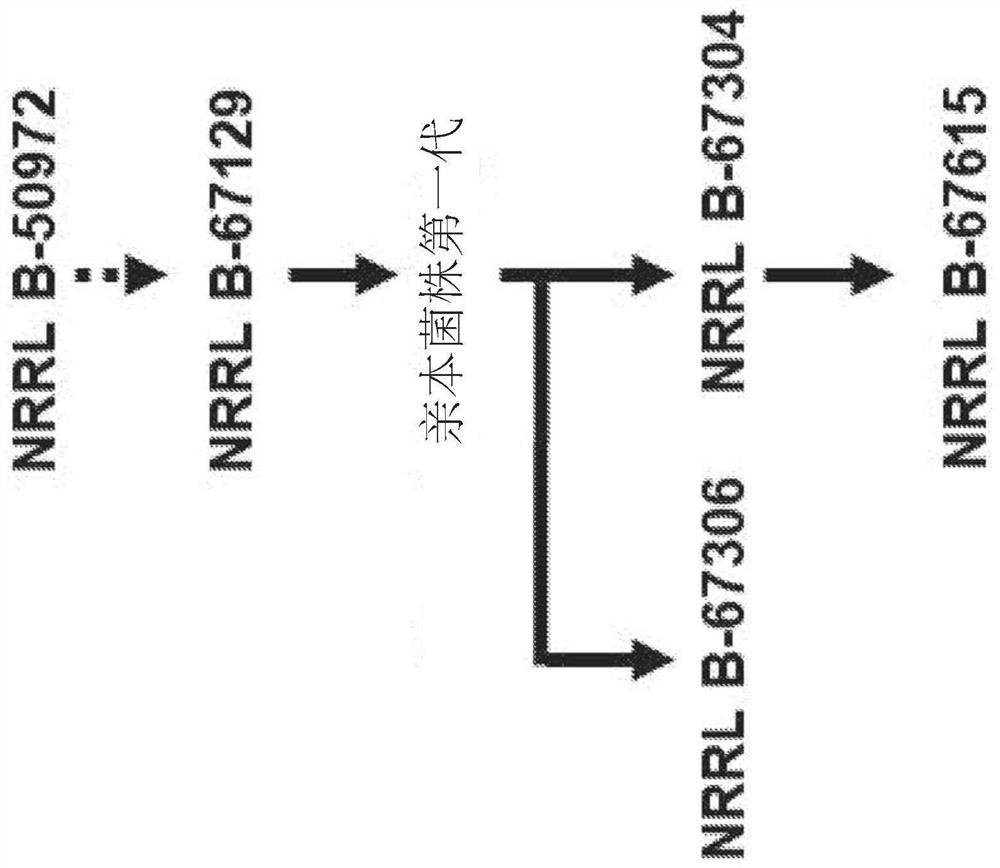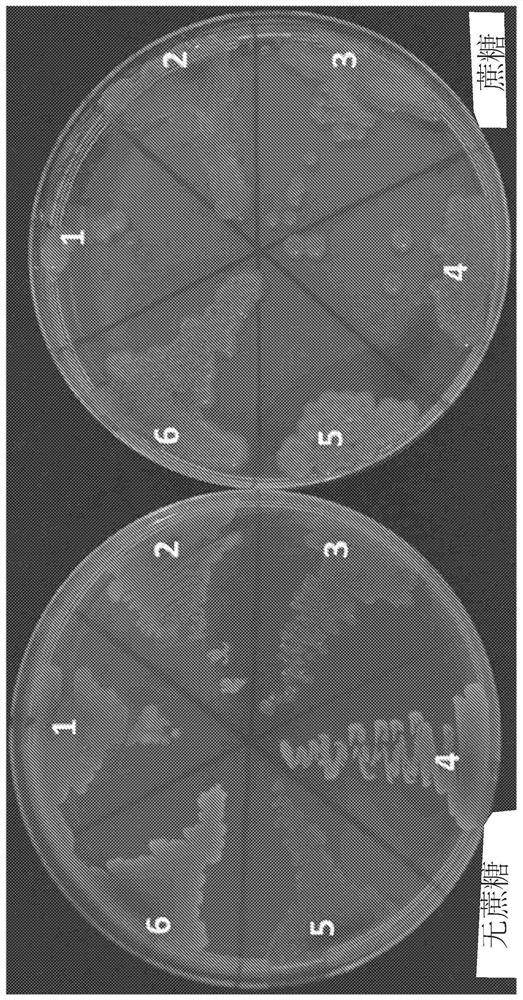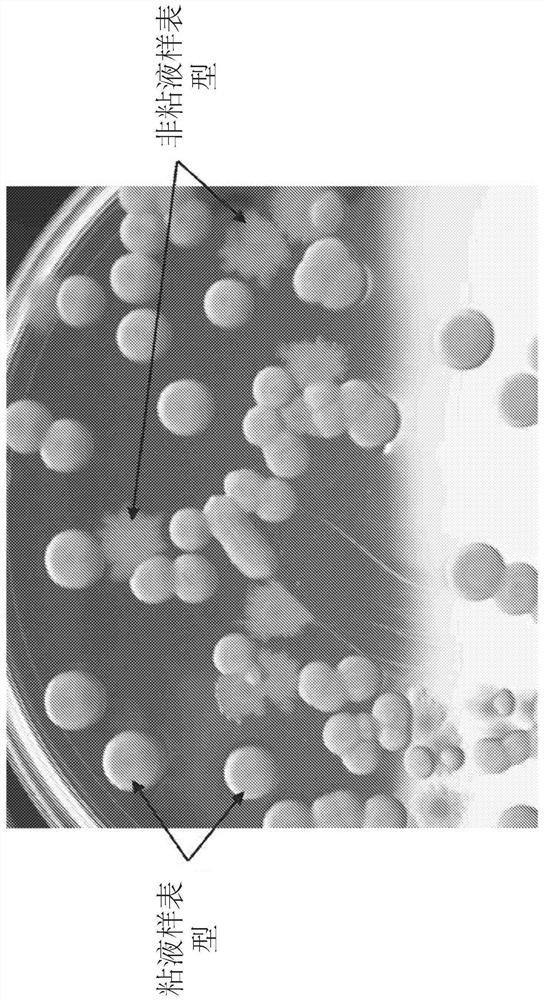Mutants of paenibacillus and methods for their use
A technology of Bacillus and Paenibacillus, applied in the field of bacterial strains and their ability to control plant diseases, can solve problems such as expensive and cumbersome procedures
- Summary
- Abstract
- Description
- Claims
- Application Information
AI Technical Summary
Problems solved by technology
Method used
Image
Examples
example
[0069] In one embodiment, mutant strains of Paenibacillus sp. strain NRRL B-67304, Paenibacillus sp. strain NRRL B-67306, or Paenibacillus sp. strain NRRL B-67615 are provided. The term "mutant" refers to a genetic variant derived from Paenibacillus sp. strain NRRL B-67304, Paenibacillus sp. strain NRRL B-67306, or Paenibacillus sp. strain NRRL B-67615. In one embodiment, the mutant has one or more of Paenibacillus sp. strain NRRL B-67304, Paenibacillus sp. strain NRRL B-67306, or Paenibacillus sp. strain NRRL B-67615 or All identifying (functional) characteristics. In a specific example, the mutant or its fermentation product controls at least as much as the parent Paenibacillus sp. strain NRRL B-67304, Paenibacillus sp. strain NRRL B-67306 or Paenibacillus sp. strain NRRL B-67615. (as identified functional characteristics) fungi, oomycetes and / or bacteria. Such a mutant may be a genetic variant having a genomic sequence that shares the same genomic sequence as Paenibacillu...
Embodiment 1
[0143] Example 1. Enhancing Fusaridin Production by Paenibacillus sp. Strain NRRL B-67129 and Mutant Derivatives thereof
[0144] Paenibacillus sp. strain NRRL B-67129 was treated with 1-methyl-3-nitro-1-nitroguanidine (NTG) or ethyl methanesulfonate (EMS) to introduce genetic variation. Treatments that resulted in a 50-90% loss of colony forming units (CFU) were considered suitable for obtaining sufficient genetic variation and viable cells for subsequent screening. Individual isolates from chemically treated populations were grown in 96-well deep-well plates (blocks) and screened for increased production of four fusicidin-like compounds, fusaricidin A (also known as " Fus A"), LiF08a, Paeniserine A1 and B1 (also called "M868" for their molecular weight); and Paeniprolixin A2 and B2 (also called "M938" for their molecular weight) as described in WO 2016 / 154297 ).
[0145] Isolates from this initial screen with significantly increased levels of fusaricidin were rescreened in...
Embodiment 2
[0152] Example 2 Reduction of the fermentation broth viscosity of Paenibacillus strain NRRL B-67129 mutant derivatives
[0153] Paenibacillus sp. strain NRRL B-50972 and Paenibacillus sp. strain NRRL B-67129 produced viscous broth cultures, as did many of the mutant strains derived from Paenibacillus sp. strain NRRL B-67129. The physicochemical properties of these cultures present challenges for fermentation and downstream processing. Therefore, there is a need to identify a method for identifying mutant derivatives of Paenibacillus sp. strain NRRL B-67129 that produce less viscous broth cultures.
[0154] Sucrose is frequently used by Paenibacillus species as a carbon source for exopolysaccharide (EPS) production, and the use of sucrose has been reported to result in a significant yield of high molecular weight Levan-type EPS (Liang and Wang. Mar. Drugs 2015, 13, 1847-1863). High molecular weight EPS polymers have found commercial use as thickeners. Along with sucrose, oth...
PUM
 Login to View More
Login to View More Abstract
Description
Claims
Application Information
 Login to View More
Login to View More - R&D
- Intellectual Property
- Life Sciences
- Materials
- Tech Scout
- Unparalleled Data Quality
- Higher Quality Content
- 60% Fewer Hallucinations
Browse by: Latest US Patents, China's latest patents, Technical Efficacy Thesaurus, Application Domain, Technology Topic, Popular Technical Reports.
© 2025 PatSnap. All rights reserved.Legal|Privacy policy|Modern Slavery Act Transparency Statement|Sitemap|About US| Contact US: help@patsnap.com



